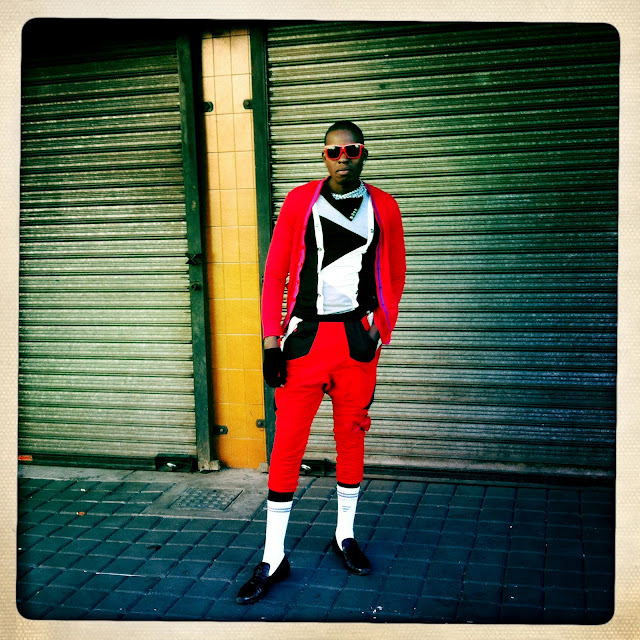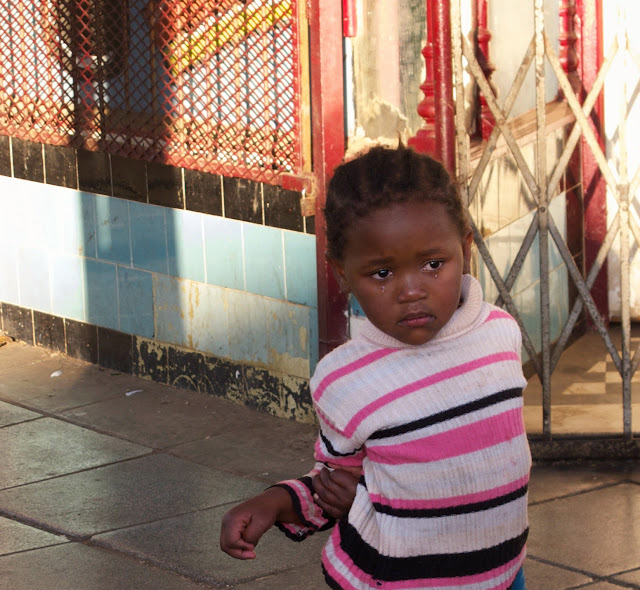On our trip to Johannesburg, we drove through some sleepy Free State towns. Invariably the town is gathered around a big old Dutch Reformed church, the name of the town is spelled out in white stones on some nearby koppie and without fail, our passing through
brought everything to a standstill.
brought everything to a standstill.
In Fauresmith, the long legged man bought some ice for the cooler box, bashing the bags to break up the ice.
Within minutes we had a crowd of onlookers.
Within minutes we had a crowd of onlookers.
These towns seem forgotten by the outside world and poverty prevails. Small shops sell cell phones and airtime, but often there is no reception. There is litter - heaps of it, and many abandoned buildings.
Just outside of Philipolis,
we saw a herd of snow white springbok in a field.
we saw a herd of snow white springbok in a field.
Miles and miles of pale golden grass.
Anthills as far as the eye can see.
The anthills reminded me of something I read years ago in Deneys Reitz's book Commando. He was reading a book on an anthill when his horse's reins became entangled. He walked off to free the mare and moments later the anthill was blown apart,
leaving his book full of holes.
leaving his book full of holes.
This journal is a first-hand account of a young man's experiences during the Boer War. (A teenager in fact - he joined the war at the tender age of seventeen) Far from the stuffy, fact-filled tomes that I've come across, it is written in a matter-of-fact yet poignant way.
"I chatted for a quiet hour with men who were mostly
dead next morning."
During the course of guerilla warfare, he had countless narrow escapes and lost scores of close friends and beloved horses.
My knowledge of the boer War is scanty at best, but the
re-reading of this book has made me curious.
From Thomas Pakenham's The Boer War:
"I chatted for a quiet hour with men who were mostly
dead next morning."
During the course of guerilla warfare, he had countless narrow escapes and lost scores of close friends and beloved horses.
My knowledge of the boer War is scanty at best, but the
re-reading of this book has made me curious.
From Thomas Pakenham's The Boer War:
The war declared by the Boers on 11 October 1899 gave the British, in Kipling's famous phrase, 'no end of a lesson'. The British expected the war to be over by Christmas. It proved to be the longest (two and three quarter years), the costliest (over 200 million pounds), the bloodiest (at least 22 000 British, 25 000 Boer and 12 000 African lives) and the most humiliating war for Britain between 1815 and 1914.
 |
| New Year, Vanrhynsdorp, 2008, photograph by Christiaan Diedericks |
I've always thought of the Free State as Boer War country - as this was the area they were fighting to keep. I little realised that the war stretched into the Western Cape - that towards the end, Vanrhynsdorp, on the edge of the Karoo, was the only town in Boer control and that they considered it their headquarters. Deneys Reitz followed General J.C.Smuts there and acted as scout and messenger, often riding his horse up and down the river.
History.
















































